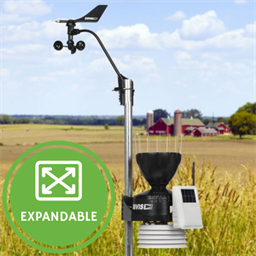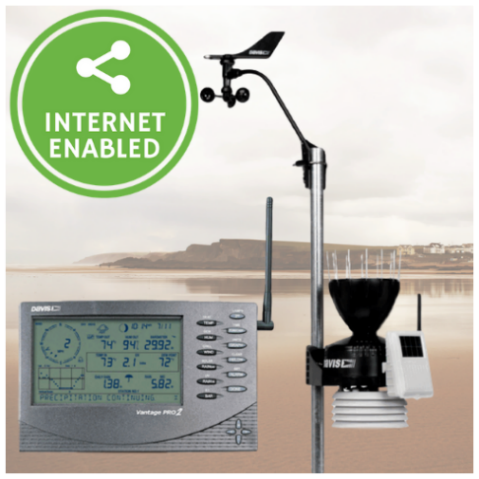Your Guide To Finding The Perfect Sensor – Part 3

A sensor is a device that detects and responds to a relevant input from the physical environment. Sensors can be tuned to any number of environmental parameters.
Sensors are used to monitor the world around us in a quantifiable manner. Various institutions, businesses and homeowners make good use of sensors to measure temperature, light, moisture, pressure, UV, humidity, current and a host of other environmental inputs. The output from sensors is generally a signal that can then be read on a suitable display, logger, or handheld device in an exploitable format.
To develop a guide to finding the perfect sensor, Instrument Choice decided to create a series of three articles. The first two cover many of the different categories of sensors available, (generally) how they work and the best applications for each. Within each category you’ll find alternative technologies you need to consider. For example, the two main technologies used in soil moisture sensors are capacitance and TDR (Time Domain Reflectometry). Each has its advantages and disadvantages.
In the third article of the series, we conclude with a checklist that our team of scientists developed after answering thousands of customer inquiries. It’s an effective way you can quickly narrow down your search to find the perfect sensor for your needs. Of course, if after scanning the series of articles you’re still not sure of the best sensor for your needs, Instrument Choice scientists are on hand to address any questions.
Common Types of Sensors (Continued from Part 2)
pH Sensors
A pH sensor measures hydrogen-ion activity in water-based solutions, indicating its acidity or alkalinity that’s expressed as pH. The pH meter measures the difference in electrical potential between a pH electrode and a reference electrode, and so the pH sensor is sometimes referred to as a "potentiometric pH meter". The difference in electrical potential relates to the acidity or pH of the solution.
pH sensors are deployed to measure acidity levels in water & wastewater treatment, pharmaceuticals, chemicals & petrochemicals, and other applications. Frequent users of pH sensors are educational institutions, water treatment plants, the food & beverage, pharmaceutical, mining and other industries.
An excellent example of a versatile professional pH sensor is the Laqua PH220-K Handheld Water Quality meter kit. This pH sensor is a portable, hand-held sensor that measures pH and temperature and includes data logging features.

Conductivity Sensors
An electrical conductivity sensor measures the electrical conductivity in a solution. They measure the ability of a solution to conduct an electric current between two electrodes. In solution, the current flows by ion transport. Therefore, an increasing concentration of ions in the solution will result in higher conductivity values. With most sensors of this type, the electrical current is then converted into an output, such as voltage, that can be read in real time via a meter or connected to a recording device, such as a datalogger.
Conductivity sensors have multiple applications in research and engineering, with common usage in hydroponics, aquaculture, aquaponics, and freshwater systems to monitor the amount of nutrients, salts or impurities in the water.
The Ionix Waterproof EC Conductivity Pocket Tester - IC-IX-EC1C is a sensor that displays temperature and conductivity simultaneously. This is important as higher water temperatures results in higher levels of conductivity.

Voltage sensors
A voltage sensor can detect as well as monitor and measure a voltage supply. Measurements are converted into a signal that an observer can read in real time and/or be interfaced with a device such as a datalogger for recording and data manipulation.
 An example of a sophisticated datalogger often used in conjunction with a voltage sensor would be the Expert Transient Data Recorder.
An example of a sophisticated datalogger often used in conjunction with a voltage sensor would be the Expert Transient Data Recorder.
5 Simple Questions – To Help You Choose the Best Sensor for Your Application
Try using this quick checklist when searching for your sensor. You’ll be leveraging the experience of our team of scientists who complied it from thousands of hours of solving client issues.
Q1: What are you trying to measure?
This question seems counterintuitive and yet it gets to the heart of the issues you need to consider for your application. Imagine you ask us something like, “I am looking for a sensor to measure the level of pH in my sushi - do you have something that will work for me? Instrument Choice would immediately offer you a sensor with a spear tip or flat tip electrode, rather than other products that would not perform in the same environment.In this way, we would save you time, money and frustration.
Q2: Where is the sensor going to be placed?
If you’re looking for the cheapest product, make sure you consider any wear and tear your sensor would experience. For example, you need to ponder the ruggedness and material compatibility of your sensor if you need to make measurements 20 meters below the surface of the Dead Sea!
Q3. How often will I need to recalibrate it?
Many manufacturers provide information on the need to recalibrate their sensors. Some give a specific timeline, while others may just provide expected outputs that can be compared to your own data to determine if a recalibration is necessary. For more information on the recommended recalibrating interval, please see the blog on this topic (reference the blog here).
Q4. What other maintenance will my sensor require?
Some sensors require a wipe down or cleaning to remove dust and debris that would affect data. Some sensors are designed to be self-cleaning so that water and dirt rinses off. If a sensor has special maintenance requirements you or any team members need to know in advance, particularly if it is to be used in an environment where this may require planning or additional facilities.
Q5. What is the cost of the sensor?
This can be one of the easiest or hardest of questions when choosing a sensor. This is because your cost analysis should go beyond the listed price. For example, does the importance of the data outweigh the monetary cost? Is getting a more expensive sensor with higher accuracy worth the more money for my application? Is the time cost of setting up the sensor included in the cost analysis? Are there any ongoing costs and how much do I need to budget for these costs? Instrument Choice scientists are expert at assisting customers with their cost analysis. Our job is that you get the sensor that will do the job and comfortably fits your funding allocation.
For information about temperature sensors and soil moisture sensors check out “Your Guide to Finding the Perfect Sensor – PART 1.”
Click here for a quick overview of pressure sensors, current sensors, and humidity sensors in “Your Guide to Finding the Perfect Sensor – PART 2.”
If this article has raised any questions you can’t answer quickly and easily, then contact a scientist .
Also interesting
A sensor is a device that detects and responds to a relevant input from the physical environment. Sensors can be tuned to any number of environmental parameters.

A sensor is a device that detects and responds to a relevant input from the physical environment. Sensors can be tuned to any number of environmental parameters.

